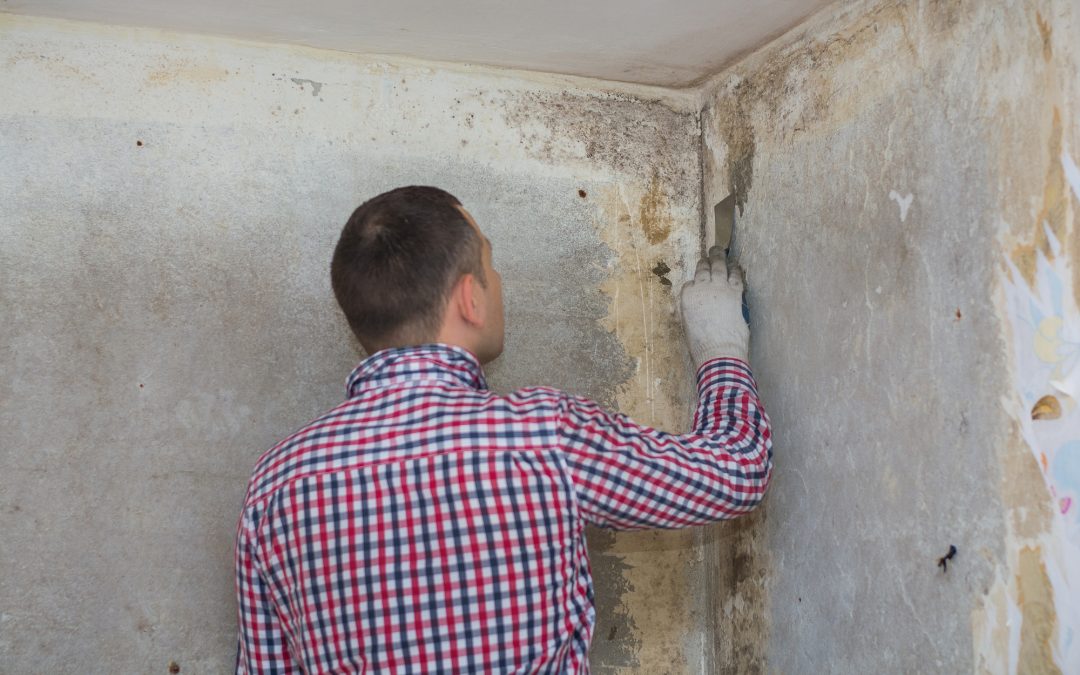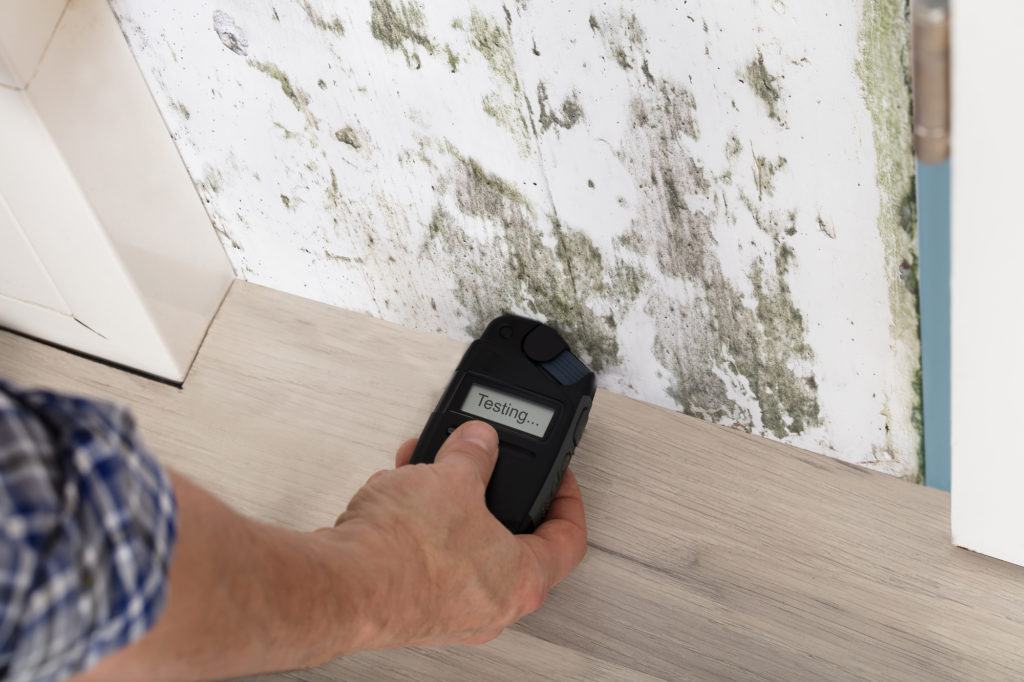Secret Tips for Effective Post Mold Remediation
Addressing mold problems in a effective and timely way is essential for preserving a healthy interior setting. Successfully finishing mold removal is a diverse procedure that requires focus to information and adherence to particular methods. From evaluating dealt with locations to applying dampness control actions, each action plays a vital function in making certain the efficiency of the remediation process. However, there are key post-remediation steps that are just as essential yet typically neglected. These actions not only verify the success of the removal initiatives however likewise add to avoiding future mold development.
Assessment of Treated Locations
Upon completion of the mold removal procedure, a detailed assessment of the dealt with locations is essential to ensure the efficiency of the remediation initiatives. This inspection acts as a vital action in the post-remediation stage to verify that the mold elimination and cleanup treatments were successful in eliminating the mold infestation and restoring a risk-free interior setting. The assessment should be conducted by certified specialists that have the proficiency to assess the remediated areas meticulously.
These consist of aesthetic assessments to examine for any indicators of mold growth or water damages, dampness degrees to validate that the location is cost-free and dry of excess humidity that might advertise mold re-growth, and air quality screening to make certain that the interior air is secure to take a breath. In addition, the inspection may involve using specialized devices such as moisture meters and thermal imaging video cameras to find surprise mold and mildew or moisture pockets that could lead to future mold problems if left unchecked.

Wetness Control Measures
Efficient wetness control actions are vital for protecting against mold development and keeping a healthy interior environment. To accomplish this, it is important to deal with sources of moisture within the structure. Appropriate ventilation is key to managing moisture levels. Setting up exhaust fans in kitchen areas and shower rooms can assist eliminate excess wetness. Furthermore, making use of dehumidifiers in wet locations can help decrease moisture levels, making it harder for mold to grow.
Frequently evaluating and keeping the structure's exterior can additionally prevent dampness invasion. After mold remediation. Guaranteeing that gutters are clear, downspouts straight water far from the structure, and the roof remains in excellent problem can help stop water from leaking into the building. Correctly securing doors and windows can also help keep moisture out
In instances where water damage occurs, prompt activity is necessary. Any spills or leakages must be cleaned up and dried within 24-48 hours to prevent mold and mildew growth. Using dampness meters can aid detect hidden resources of water and ensure comprehensive drying out. By applying these moisture control procedures, the danger of mold persisting can be considerably lowered, creating a healthier indoor environment.
Appropriate Air Flow Assessment
An essential facet of guaranteeing a healthy and balanced indoor setting blog post mold remediation is conducting a comprehensive evaluation of the ventilation system. Appropriate ventilation evaluation plays a critical duty in avoiding future mold and mildew development and preserving air quality within the affected area.
Additionally, examining the ventilation system consists of checking out the circulation of air throughout the location to recognize any type of locations of inadequate blood circulation where moisture and impurities might collect. Proper ventilation not only helps in managing moisture degrees however additionally aids in getting rid of air-borne mold and mildew spores and other pollutants, therefore boosting overall indoor air top quality. By addressing any type of air flow concerns upload mold and mildew removal, residential property proprietors can produce a healthier and more comfy setting for occupants while decreasing the threat of mold re-infestation.
Cleansing and Sanitation Protocols
To make sure thorough mold and mildew remediation, thorough adherence to certain cleaning and sanitation protocols is necessary. Cleaning and sanitation protocols play a vital duty in the post-mold removal stage to stop the recurrence of mold and mildew development and make sure a healthy and secure setting.
After the preliminary cleaning, detailed disinfection of the affected areas is necessary to kill any kind of staying mold spores and hinder their spreading. This step is vital in preventing the spread of mold and mildew to various other components of the home. In addition, implementing safety nets such as applying mold and mildew preventions and preserving correct air flow can assist lessen the threat of future mold and mildew problems. By adhering to strict cleaning and disinfection procedures, homeowner can guarantee the successful removal of mold and mildew and create a healthy interior atmosphere for passengers.
Monitoring and Upkeep Strategy
Applying a normal tracking and upkeep plan is crucial for making sure the lasting effectiveness of mold and mildew removal efforts. As soon as mold removal is completed, it is crucial to establish a tracking timetable to evaluate the success of the removal process.
Additionally, developing an upkeep strategy is crucial to avoid future mold issues. This strategy may consist of actions such as dealing with pipes leakages, improving ventilation, visit the site and controlling interior moisture levels. Routine maintenance not only aids in avoiding mold and mildew but additionally adds to maintaining a healthy and balanced interior atmosphere. It is recommended to record all tracking and maintenance tasks to track progression and make sure uniformity in the upkeep of the remediated areas. By executing a comprehensive tracking and maintenance plan, this hyperlink the risk of mold and mildew re-emergence can be substantially reduced, advertising a secure and tidy living or functioning setting.
Final Thought
Finally, effective message mold and mildew remediation includes comprehensive examination of treated locations, application of dampness control steps, analysis of proper air flow, adherence to cleansing and sanitation protocols, and establishment of a tracking and upkeep strategy. These vital steps are important to ensure that mold growth is successfully removed and prevented from repeating in the future. By complying with these standards, building owners can maintain a healthy and balanced and safe atmosphere for passengers.
Upon conclusion of the mold and mildew removal process, a thorough assessment of the dealt with locations is necessary to ensure the efficiency of the removal initiatives. These include aesthetic analyses to check for any indications of mold and mildew development or water damages, dampness degrees to validate that the location is complimentary and dry of excess humidity that might promote mold re-growth, and air top quality testing to make sure that the indoor air is risk-free to breathe. In addition, the evaluation might include using specialized devices such as dampness meters and thermal imaging cameras to identify concealed mold or dampness pockets that could lead to future mold and mildew troubles if left untreated. By addressing any type of air flow issues visit our website publish mold and mildew remediation, property owners can produce a much healthier and more comfortable atmosphere for occupants while lowering the risk of mold and mildew re-infestation.
